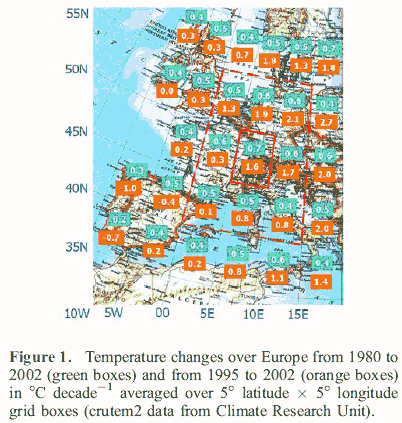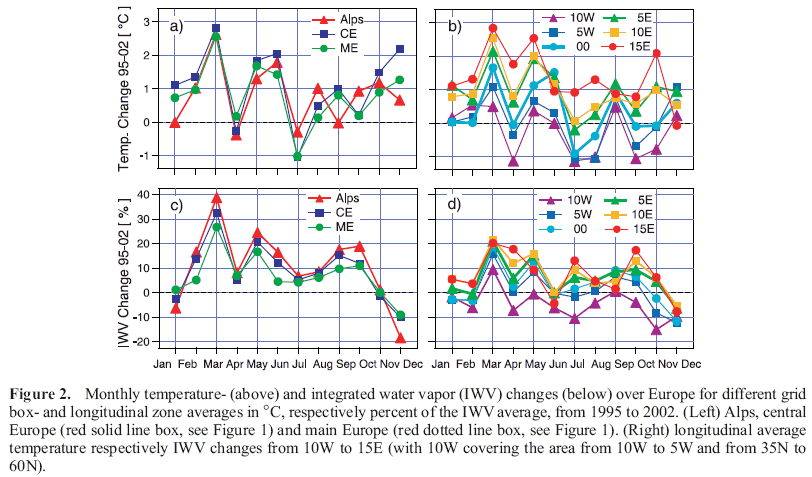
Click here for Dr Philipona's replies see para 2
See below all the graphics for comments on MSU trends
 |
I found it odd that Philipona et
al would use surface T data when many of the atmospheric processes they
were comparing with were operating well above the surface. Click here for Dr Philipona's replies see para 2 See below all the graphics for comments on MSU trends |
 |
Panel b shows the monthly CRUT2
surface T changes for the specified longitude bands for the period 1995
to 2002. Panel d shows changes in Integrated Water Vapour (IWV) and the effect of these two panels is clearly to impress readers that they show similar trends, warming from west to east and increase in IWV from west to east.. Click here for Dr Philipona's replies see para 7 |